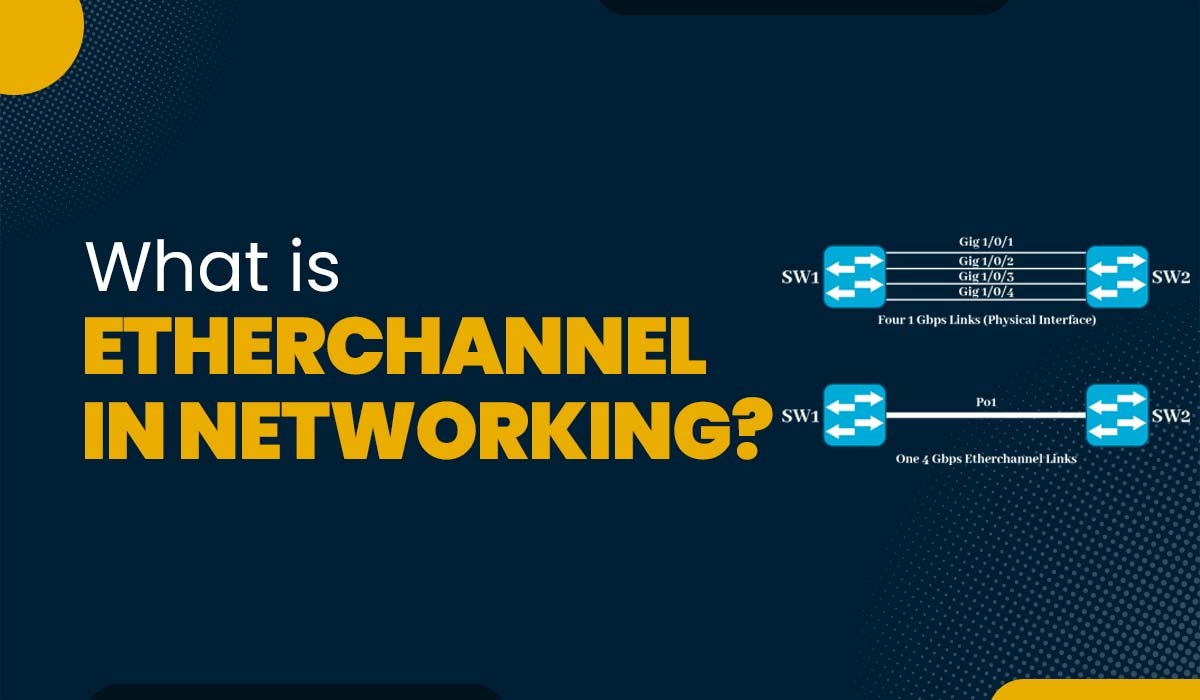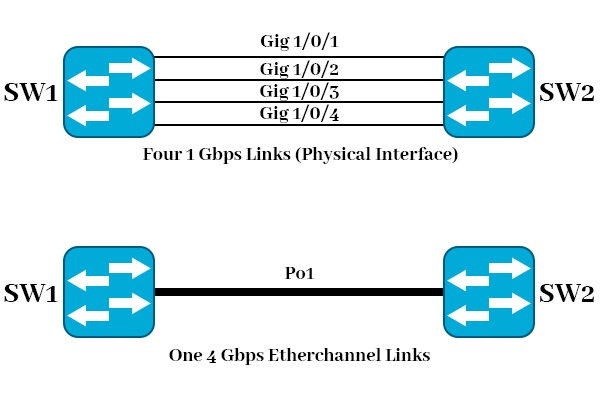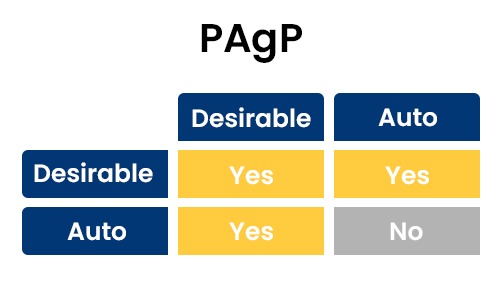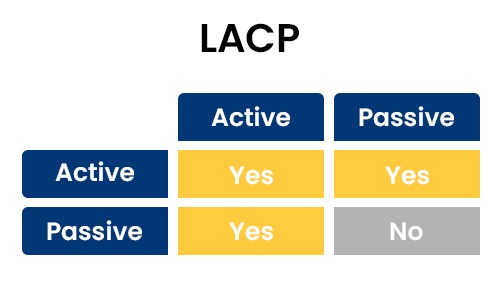What is EtherChannel in Networking?

Have you ever faced a scenario where you want more bandwidth than what your network link can provide? Or have you ever experienced a network outage because of a single link failure? If yes, then you are probably interested in EtherChannel. It is a port link aggregation technology that groups together more than one physical Ethernet link to create one logical Ethernet link for the purpose of providing fault-tolerance and high-speed links between switches, routers, and servers. In this blog, we will explain EtherChannel in networking, its purpose, and the different protocols it uses in detail. EtherChannel is a port-channel architecture or port-link aggregation technology that is predominantly utilized on Cisco switches. For the aim of providing fault-tolerance and fast connectivity between switches, routers, and servers, it enables the grouping of numerous physical Ethernet links into one logical Ethernet link. Only 8 interfaces can be active at once while using EtherChannel, which can combine up to 16 physical interfaces into a single logical interface. If any of the active interfaces fails, the other 8 interfaces can switch from standby to active mode. Switches, routers, and servers consider the logical interface as a single entity, and traffic is divided among the physical interfaces in the group. Below, you can see the image for a better understanding. To create an EtherChannel in Networking, all of the interfaces in the group should have: EtherChannel can use different algorithms to decide which physical interface to send traffic over, such as: It’s primary function is to offer redundant, fast connections between network devices. We can profit from utilizing EtherChannel in networking in the following ways: Since EtherChannel may aggregate or combine traffic across all active links in the group, it appears to be a single, higher-bandwidth logical cable. For instance, we can utilize it to turn a pair of switches’ four 100 Mbps links into a single logical link with 400 Mbps of capacity. It can offer fault tolerance by way of mechanically switching traffic to some other active link within the group if one link fails. In this manner, we will avoid dropping connectivity or data between network devices. For example, if one of the four one hundred Mbps links between two switches fails, EtherChannel will still keep a 300 Mbps logical link between them. It can distribute traffic across more than one physical link in the group primarily based on distinctive standards, such as MAC address or IP address. In this manner, we can easily avoid congestion or bottlenecks on a single link and improve the overall performance of our network. For instance, if we’ve got different types of traffic with different source and destination addresses, it will send them over links to different links in the group. EtherChannel in Networking works by using special protocols that negotiate and establish the link aggregation between devices. The protocols that are used in EtherChannel configuration are: It is possible to dynamically negotiate and create an EtherChannel between two devices using the Cisco-proprietary PAgP protocol. In order to determine whether two devices are compatible and willing to build an EtherChannel, PAgP uses an exchange of messages between them called packets. The two modes of PAgP are Desirable and Auto. The device actively initiates and requests to build an EtherChannel with another device when it is in the desirable mode. The device waits passively for another device to begin and requests to form an EtherChannel when it is in auto mode. Both devices must have at least one interface in the desirable mode or both interfaces in auto mode in order to form an EtherChannel using PAgP, as you can see in the image below for better understanding. We may dynamically negotiate and form an EtherChannel between two devices made by different vendors with the help of the LACP protocol, which is an IEEE standard protocol. Similar to PAgP, LACP tests the compatibility and willingness of the devices to form an EtherChannel by exchanging messages called frames between them. The three modes of LACP are active, passive, and on. In active mode, the device requests to form an EtherChannel with another device and actively starts the request. The device waits passively for another device to begin and requests the formation of an EtherChannel in networking while it is in passive mode. In “on” mode, the device assumes that an EtherChannel is there without engaging in any communication or negotiation with another device. In on mode, the device does not negotiate or exchange any messages with another device but simply assumes that it exists. Both devices must have at least one active interface, or one active interface and one passive interface, in order to create an EtherChannel utilizing LACP. We have shown in the image below for better understanding. Three types of EtherChannel in networking are: EtherChannel is a link aggregation technology that is mainly used to link more than one physical port link into a single logical link. A port channel is a logical interface that represents a group of physical links aggregated together. EtherChannel in networking is a Cisco term for link aggregation technology that bundles multiple links into one logical link. LACP is used to combine multiple physical links into one logical link for higher bandwidth and redundancy. EtherChannel is a powerful feature that allows us to combine multiple physical links into one logical link, increasing the bandwidth and redundancy of the network. In this blog, we have explained EtherChannel in networking along with its purpose and how it works. If you have any queries, feel free to comment below.Introduction
What is EtherChannel?

Purpose of EtherChannel in Networking
Increased Bandwidth
Improved Redundancy
Enhanced Load Balancing
How Does EtherChannel Work?
PAgP (Port Aggregation Protocol)

LACP (Link Aggregation Control Protocol)

Frequently Asked Questions
Q1. What are the 3 types of EtherChannel?
Q2. What do you mean by EtherChannel?
Q3. What is port channel vs EtherChannel?
Q4. Why is LACP used?
Conclusion







